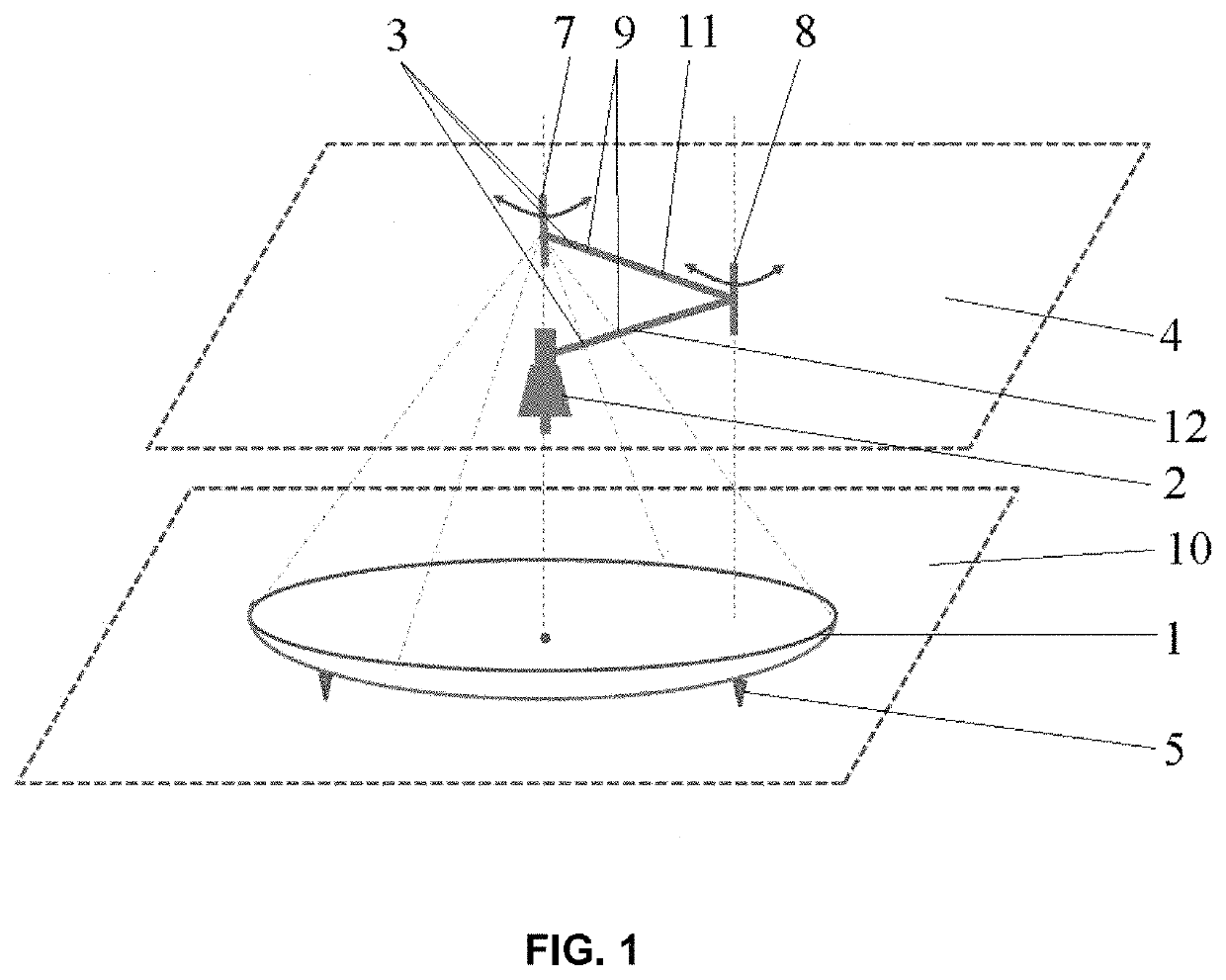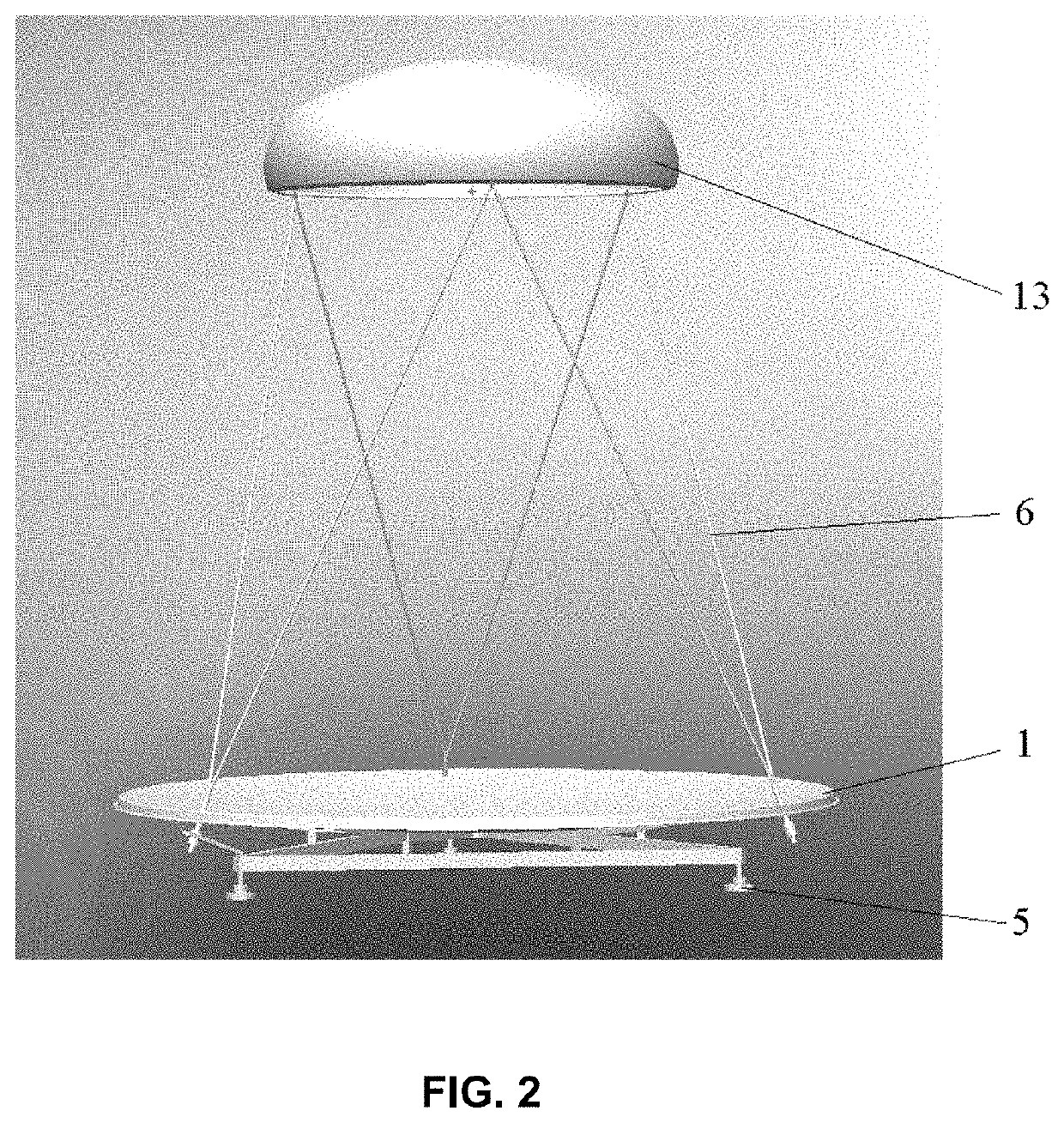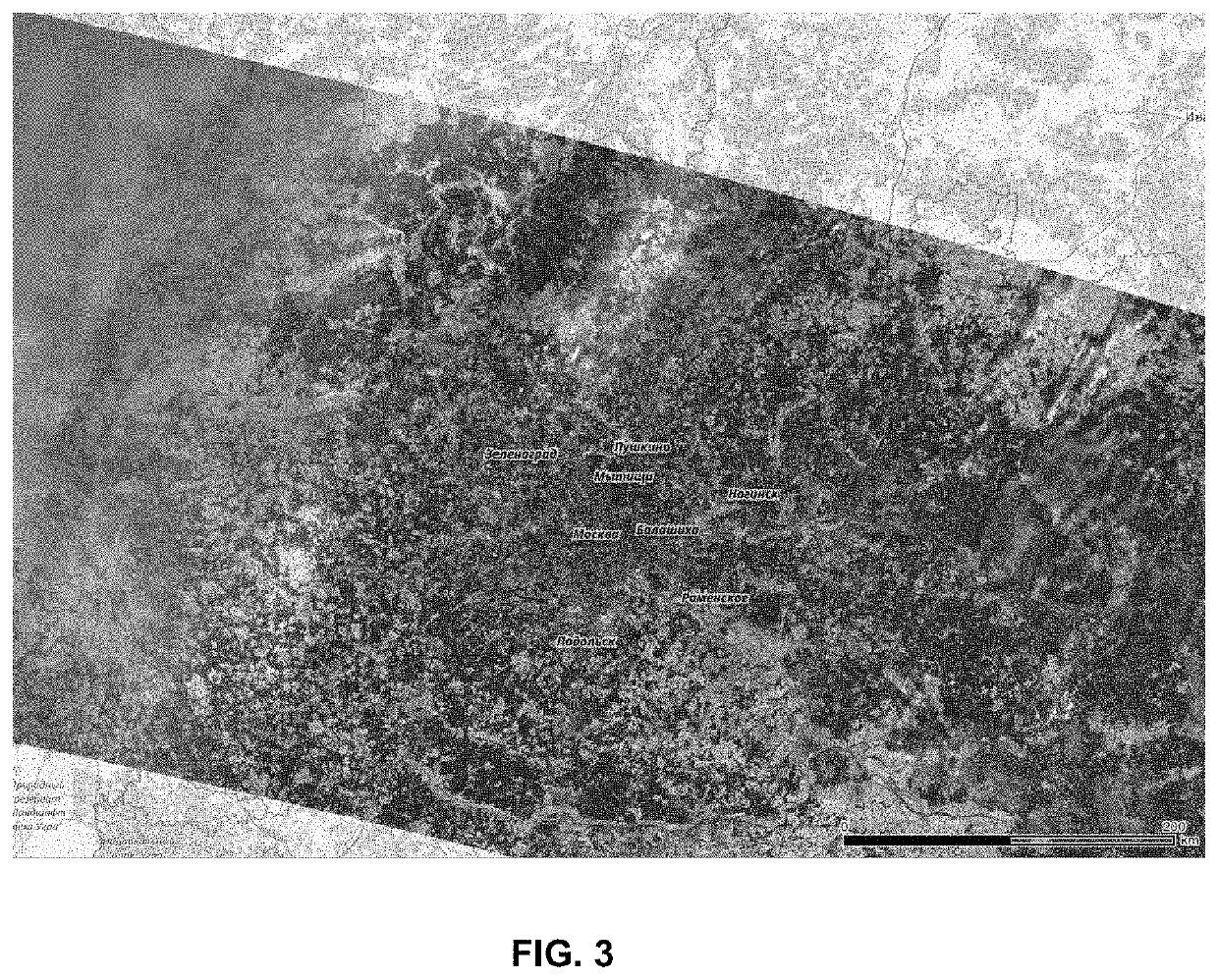Antenna for receiving data from low earth orbit satellites
an antenna and satellite technology, applied in the direction of antennas, electrical equipment, etc., can solve the problems of complex mechanism for displacing the entire antenna structure, increasing the weight of the antenna structure, and difficult assembly and installation of the fram
- Summary
- Abstract
- Description
- Claims
- Application Information
AI Technical Summary
Benefits of technology
Problems solved by technology
Method used
Image
Examples
Embodiment Construction
[0039]The proposed antenna for receiving data from low Earth orbit satellites comprises a long-focus antenna reflector with a moveable feed.
[0040]The antenna for receiving data from low Earth orbit satellites (FIG. 1) comprises a fixedly mounted antenna reflector 1 having a paraboloid shape with a wide aperture (a long-focus antenna reflector). The antenna further comprises a moveable feed 2 and a feed positioner 3 configured to move the feed 2 in the focal plane 4 of the antenna reflector 1. The feed 2 structure does not include a counter-reflector used in the prior art, thus reducing antenna reflector 1 blockage. The antenna further comprises a control device (not shown) configured to send control signals to the feed positioner. In this embodiment, the antenna reflector 1 is a parabolic reflector and is mounted on a surface by means of legs 5 which constitute a part of the antenna supporting structure. The supporting structure further comprises a frame 6 (FIG. 2) retaining the fee...
PUM
 Login to View More
Login to View More Abstract
Description
Claims
Application Information
 Login to View More
Login to View More - R&D
- Intellectual Property
- Life Sciences
- Materials
- Tech Scout
- Unparalleled Data Quality
- Higher Quality Content
- 60% Fewer Hallucinations
Browse by: Latest US Patents, China's latest patents, Technical Efficacy Thesaurus, Application Domain, Technology Topic, Popular Technical Reports.
© 2025 PatSnap. All rights reserved.Legal|Privacy policy|Modern Slavery Act Transparency Statement|Sitemap|About US| Contact US: help@patsnap.com



